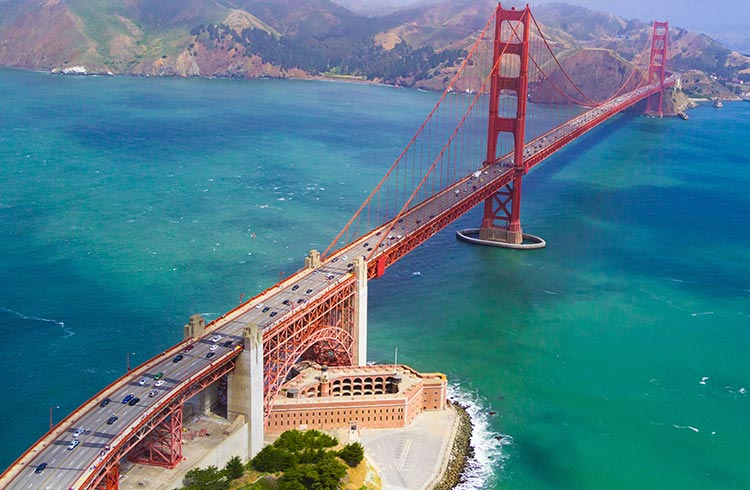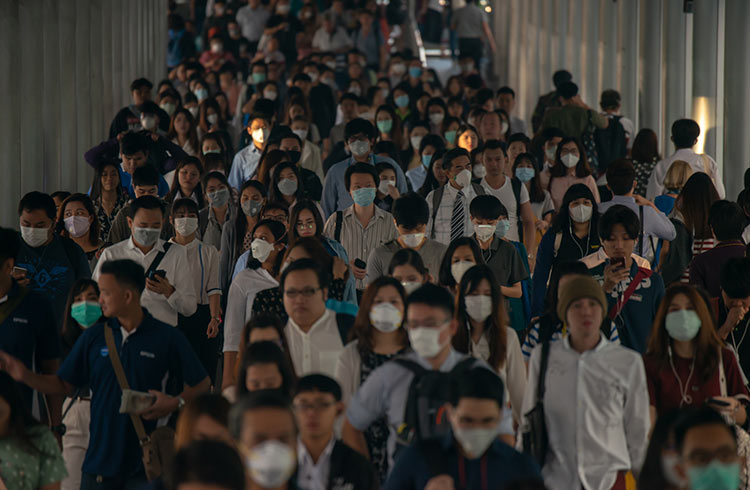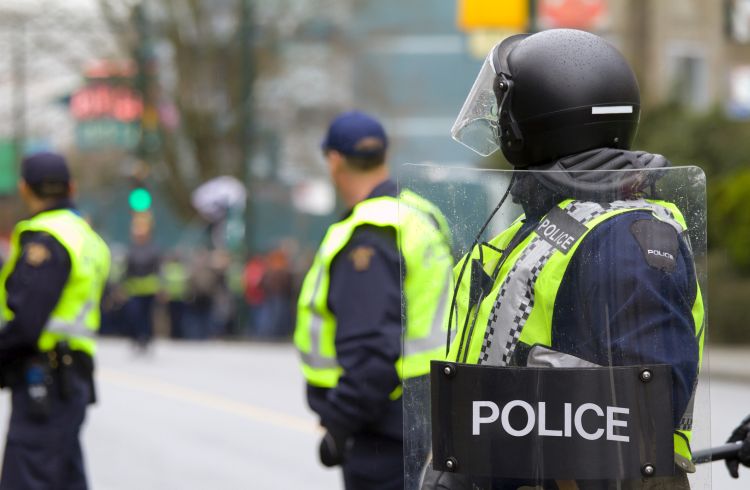Latest Travel Alerts and Warnings for Visitors to the USA
What are the issues affecting travelers in the USA? Read the latest travel warnings and alerts.
 Photo © Photo by Edgar Chaparro on Unsplash
Photo © Photo by Edgar Chaparro on Unsplash
12 May 2023 - COVID-19 vaccine requirements for air travelers to the USA will end.
Hurricane Ian approaches west coast of Florida - 28 September 2022
UPDATE - 29 September 2022: Hurricane Ian made landfall as a strong Category 4, causing extensive damage and flooding. The hurricane has weakened to a Tropical Storm and is making its way across central Florida, headed for Georgia and South Carolina. It may strengthen again and is still dangerous. Travelers in the area should monitor the situation and follow official warnings.
Currently a Category 4 hurricane with winds of 155mph, Ian is forecast to make landfall on the southwestern coast of Florida near Ft. Myers later today as a hurricane of Category 4 or greater. It is already nearing Category 5.
Catastrophic storm surges of 12 to 18 feet above ground level are expected along with destructive waves. Catastrophic winds are expected to extend well inland.
Be sure to check the latest information from the National Hurricane Center, and keep an eye on local media for the latest updates.
If you're in an area where a storm is projected to hit, please check with authorities, follow any official warnings and listen to local news reports to monitor the situation.
Here are helpful tips on hurricane safety.
Unrest in Washington, DC – January 2021
In response to the violent insurrection at the US Capitol Building on January 6, DC Mayor Muriel Bowser has announced a state of emergency, in effect through January 24. National Guard troops have been mobilized in preparation for potential unrest in the days leading up to and during President-elect Joe Biden's inauguration on January 20. The mayor has urged people to avoid the city during the inauguration.
Protests have also been reported at state capitols around the country, and more may be planned in upcoming days. As violence may break out, people should steer clear of these gatherings.
Wildfires – Western US – Sept-Nov 2020
Wildfires are raging in several western states, with the most severe currently happening in Colorado, California, and Oregon. Avoid travel to affected areas, and be on the lookout for road closures. Drivers should be sure to carry ample fuel as well as food and water. One of the biggest dangers from the fires is air quality - stay indoors when air quality is poor, even if you don't smell smoke. Ash in the air can also be hazardous.
Protests and potential riots – June-Oct 2020
Protests against racism and police brutality have been held in cities across the country over the past several months. Some protests have turned violent. Tear gas and non-lethal (but still very dangerous) projectiles have been used against protestors, and there have been sometimes deadly clashes between protestors and anti-protestors. Travelers are advised to use caution if near or attending a protest, and to be ready to leave quickly should violence erupt. Travelers should also keep in mind that coronavirus (COVID-19) is a risk when large numbers of people are gathered, and to take appropriate precautions.
Get tips on staying safe during civil unrest.
Hurricane Zeta approaches US Gulf Coast – 26 October 2020
Currently a powerful tropical storm, Zeta is forecast to strengthen over the next few days, and make landfall on the central Gulf Coast as a hurricane of Category 1 or greater. Landfall is expected on Wednesday, and will likely be centered in Louisiana, but people from east Texas to Florida should begin preparing.
Be sure to check the latest information from the National Hurricane Center, and keep an eye on local media for the latest updates.
If you're in an area where a storm is projected to hit, please check with authorities, follow any official warnings and listen to local news reports to monitor the situation.
Here are helpful tips on hurricane safety.
Hurricane Delta approaches US Gulf Coast – 6 October 2020
Currently a Category 4 storm, Hurricane Delta is forecast to make landfall on the central Gulf Coast as a Category 3 hurricane or greater. Landfall is expected late Friday or early Saturday, and will likely be centered in Louisiana, but people from east Texas to Florida should begin preparing. Impacts such as flooding and storm surge may start a day or two ahead of the storm, and are likely to be major.
Be sure to check the latest information from the National Hurricane Center, and keep an eye on local media for the latest updates.
If you're in an area where a storm is projected to hit, please check with authorities, follow any official warnings and listen to local news reports to monitor the situation.
Here are helpful tips on hurricane safety.
Hurricane Sally approaches Gulf Coast – 14 September 2020
Hurricane Sally is currently headed towards the coastline of Alabama, Mississippi, and Louisiana, and is expected to make landfall tonight or tomorrow morning, possibly as a Category 2 storm. Life-threatening flooding and storm surge are predicted.
Hurricane Paulette is currently impacting Bermuda and may move towards the southeastern United States in upcoming days. Tropical Storm Teddy has also formed in the central Atlantic and is expected to strengthen into a hurricane as it moves west.
Be sure to check the latest information from the National Hurricane Center, and keep an eye on local media for the latest updates.
If you're in an area where a storm is projected to hit, please check with authorities, follow any official warnings and listen to local news reports to monitor the situation.
Here are helpful tips on hurricane safety.
Hurricane Douglas approaches Hawaii, Hurricane Hanna approaches Texas – 25 July 2020
Hurricane Douglas is currently approaching the Hawaiian Islands. Hurricane Watches are in effect for the Big Island, Maui County, and Oahu. A Tropical Storm Watch has been issued for Kauai County. The storm is forecast to pass about 30 miles north of Maui with sustained winds of 90mph.
Hurricane Hanna is on course to strike the Texas coast south of Corpus Christi. The storm is expected to make landfall this afternoon as a Category 1 hurricane. A life-threatening storm surge is possible.
Wildfires in California: a statewide emergency declared – October 2019
Strong winds have spread wildfires in Northern and Southern California, destroying homes and land, and forcing 185,000 people to evacuate.
There are blackouts in Northern California due to Pacific Gas & Electric Co shutting off power to two million people to avoid further fires being caused by fallen electric power lines.
Strong winds are expected to last until Wednesday, so it's important you listen to the advice of firefighters and stay up to date with local news reports.
We suggest you check your government’s travel advisory for their latest advice on travel to the USA, and if you're planning on traveling there soon, contact your tour operator or provider for more information on any changes or updates to your travel plans.
- Hurricane Dorian threatens southeastern coast - September 3, 2019
- How to survive a hurricane
- Hurricane warnings and categories
- Wildfires in Southeastern Alaska - August 30, 2019
Hurricane Dorian threatens southeastern coast – 3 September 2019
Hurricane Dorian is currently a Category 2 storm heading towards the US mainland, where it is projected to move close to the coast of Florida tonight through Wednesday, and then along Georgia and the Carolinas. Life-threatening storm surge and flooding is possible, and mandatory evacuations have been ordered for dozens of coastal communities. Be sure to check the latest information from the National Hurricane Center, and keep an eye on local media for the latest updates.
If you're in an area where the storm is projected to hit, please check with authorities, follow any official warnings and listen to local news reports to monitor the situation.
How to survive a hurricane
The absolutely best way to survive a hurricane is to avoid one. Get away from it, but if you make the decision to leave, make that decision early. Do not leave it until the last minute because you may find yourself caught without proper shelter.
If you decide to stay and "ride it out" it is advisable to get to an authorized shelter. The locations of these will be broadcast, or locals will know where they are. If there is no shelter, prepare to "shelter in place" in an internal room without windows.
Once a "storm watch" has been issued, make sure you are prepared in the event that the watch becomes a "warning."
- Fill the gas tank of your car.
- Check batteries in flashlights and radios.
- Have extra batteries on hand.
- Secure all doors and windows.
- Close shutters or board up the windows.
- Have extra supplies with you such as non-perishable food, clean drinking water, a half-gallon of water per person/per day (enough for a couple of days), and prescription drugs.
During the storm
- Never go out during the storm. The winds can send flying debris into you causing injury and even death.
- Stay away from windows and doors.
- Keep on the alert for additional storm warnings. Hurricanes are known to spawn tornadoes so be prepared to take cover if one should strike.
- While the storm is in progress avoid using electrical appliances.
- Stay off the telephone.
- All pets should be secured in carriers. The storm will be a frightening experience for them as well, and they could injure themselves or you if they panic.
- Do not light candles or lanterns; they could get blown over causing a fire.
- The eye of the storm passing over could make you think the storm is over when the worst is still yet to come. Only use this calm in an extreme emergency to make critical repairs.
- Only after an official "all clear" has been issued is it safe to come out.
After the storm
- Beware of downed power lines and gas leaks
- Stay away from heavily damaged areas
- Listen to your radio for instructions.
Hurricane warnings and categories
A tropical storm becomes a hurricane when wind speeds reach 74 mph or greater - Category 1.
- Category 2 wind speeds are 96 mph to 110 mph
- Category 3 - 111 mph to 129 mph
- Category 4 - 130 mph to 156 mph
- Category 5 - greater than 157 mph (note, there are no further categories)
A "watch" is issued when hurricane-force winds are possible in the named region (so maybe a hurricane is coming).
A "warning" is issued when hurricane-force winds are expected in the named region (so a hurricane is definitely coming).
Wildfires in southeastern Alaska - 30 August 2019
Several wildfires are currently burning in Southeast Alaska and impacting popular tourist areas, including the Kenai Peninsula and Matanuska-Susitna (Mat-Su) Valley. At the time of writing, the McKinley Fire in the Mat-Su Valley was at 78% containment, and the Caribou Lake Fire near Homer was at 57% containment. The Swan Lake Fire on the Kenai Peninsula has been slowly increasing, but has remained at around 20% containment.
For the latest information, check with Alaska Wildland Fire Information.
On Wednesday, the U.S. Fish and Wildlife Service and U.S. Forest Service closed portions of the Kenai National Wildlife Refuge, including all lands in the Skilak Wildlife Recreation Area, as well as parts of the Chugach National Forest.
Travelers should expect delays on the Sterling Highway between Sterling and the junction with the Seward Highway to continue through the weekend. Swan Lake Fire suppression activities and dense smoke have restricted travel on this route recently. Drivers should be sure to carry ample fuel as well as food and water. Do not stop along the highway within the fire area.
One of the biggest dangers from the fire is air quality. The Alaska Department of Environmental Conservation has issued an Air Quality Advisory in effect through Friday afternoon for the Susitna Valley, Kenai Peninsula and Copper River Valley.
If you’re planning a trip to Alaska in upcoming weeks, be sure to check with your tour operator, airline, and hotel about potential changes or cancellations.
Tropical Storm Barry forming off the Louisiana Coast - 11 July 2019
Tropical Storm Barry is moving across the Gulf of Mexico towards Louisiana and is expected to make landfall Friday or Saturday, possibly as a Category 1 hurricane. A state of emergency has been issued in Louisiana. Heavy rainfall and flooding is expected for much of eastern Louisiana, southern and central Mississipi, and southeast Arkansas.
Please check with authorities, follow any official warnings and listen to local news reports to monitor the situation.
Related articles
Simple and flexible travel insurance
You can buy at home or while traveling, and claim online from anywhere in the world. With 150+ adventure activities covered and 24/7 emergency assistance.
Get a quote

No Comments